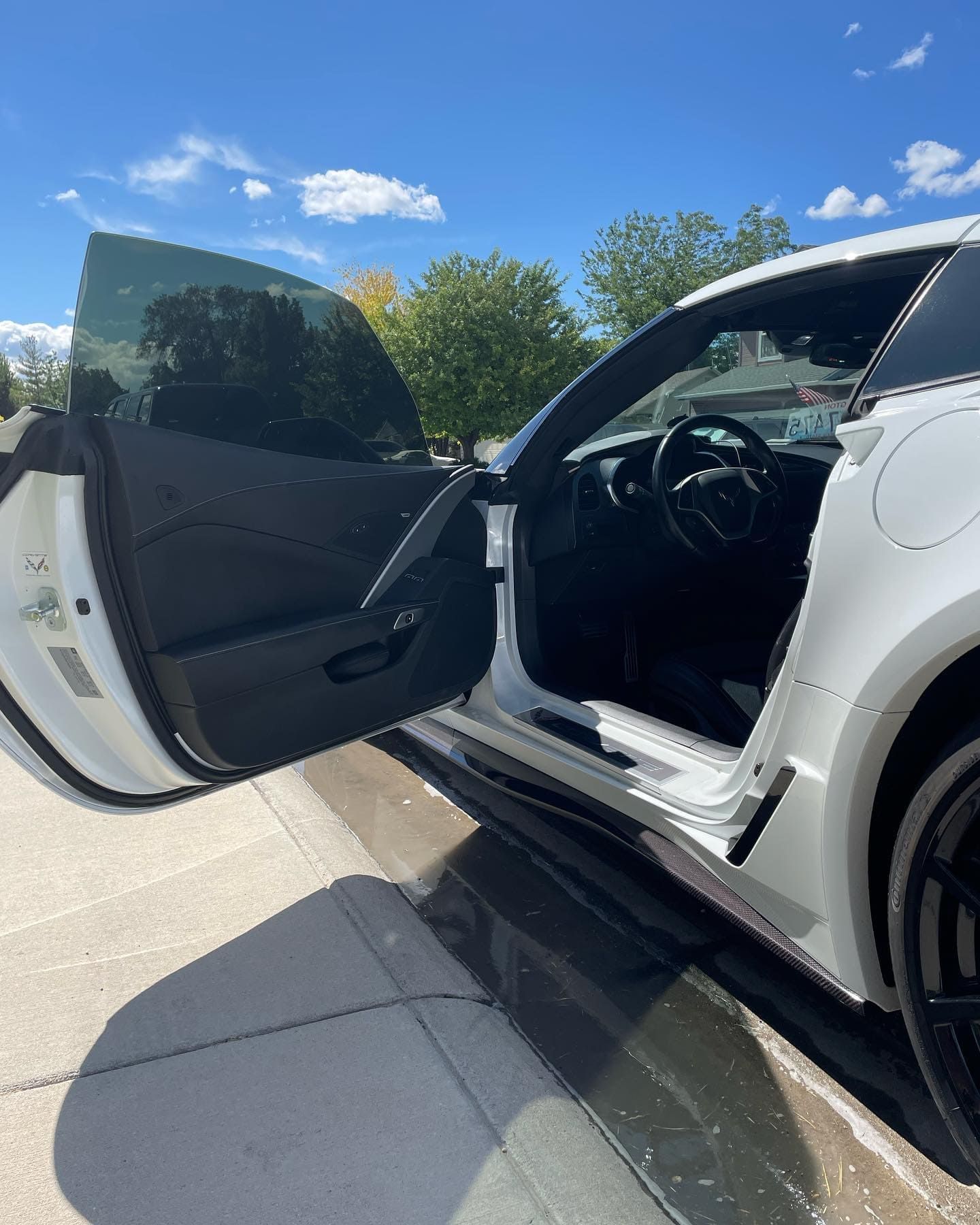Idaho Window Tinting Laws
Car window tinting laws in Idaho were enacted in 1992.
We have provided all the necessary information about your car’s window tint, including how dark or reflective the tint is allowed in your state.
There are also additional car window tinting rules and regulations in Idaho so make sure you read all about it below.
Window tint darkness in Idaho
The percent of visible light allowed through your car windows is called VLT: Visible Light Transmission.
The percentage of light allowed through your film and glass in Idaho is very specific and different for sedan cars and SUV cars or vans.
Tint darkness for sedans:
- Windshield: Non-reflective tint is allowed above the manufacturer’s AS-1 line or top 6 inches.
- Front Side windows: Must allow more than 35% of light in.
- Back Side windows: Must allow more than 20% of light in.
- Rear Window: Must allow more than 35% of light in.
Tint darkness for SUV and vans:
- Windshield: Non-reflective tint is allowed above the manufacturer’s AS-1 line or top 6 inches.
- Front Side windows: Must allow more than 35% of light in.
- Back Side windows: Must allow more than 20% of light in.
- Rear Window: Must allow more than 35% of light in.
Window tint reflection in Idaho
Window tint can reflect incoming light and reduce glare and heat.
Idaho window tint law permits a certain window reflection when using a tint so make sure you pay attention to this as well.
Tint reflection for sedans:
- Front Side windows: Must not be more than 35% reflective.
- Back Side windows: Must not be more than 35% reflective.
Tint reflection for SUV and vans:
- Front Side windows: Must not be more than 35% reflective.
- Back Side windows: Must not be more than 35% reflective.
Other Idaho window tint rules and regulations:
Idaho does have several other important laws, rules and regulations pertaining to window tinting. They include the following:
- Side Mirrors: Dual side mirrors are required if back window is tinted.
- Restricted Colors: No colors of tint are specified as banned.
- Tint Variance: State laws allow 3% light transmission tolerance.
- Certificates: Film manufacturers are not required to certify the film they sell in this state.
- Stickers: No sticker to identify legal tinting is required.
- Medical Exceptions: Idaho allows medical exemptions for special tint (75% on windshield and 20% on other windows).
- Penalties: Traffic infraction.
Keep in mind that Idaho tinting laws and regulations may be interpreted differently in your county or place of residence.
We always recommend double-checking our information with your local DMV or law enforcement authorities.
Our information about window tint laws in Idaho was last updated in 2024.
Tinting laws in Idaho were enacted in 1992.
In case any of our info provided is not up to date or correct be sure to contact us so we can fix it. Thanks!
Trusted industry leader in providing accurate window tint laws. Share with confidence:
What is the darkest legal tint in Idaho?
Idaho, with its diverse landscapes and varying weather conditions, prompts many vehicle owners to explore window tinting options. However, understanding the permissible limits of tint darkness is crucial to navigate the Gem State's regulations. In this guide, we'll shed light on Idaho's tint laws and reveal the darkest legal tint to keep you on the right side of the law.
Cracking the Code of Idaho Tint Laws:
Idaho regulates window tint darkness primarily through Visible Light Transmission (VLT), measuring the percentage of visible light that passes through the tinted windows. To stay compliant, it's essential for vehicle owners to be aware of the legal limits set by the state.
Darkest Legal Tint:
Embarking on Idaho's scenic drives requires not just a sense of adventure but also an understanding of the state's window tint regulations. The darkest legal tint for front side windows in Idaho is typically set at 35% Visible Light Transmission (VLT). This means that only 35% of visible light is allowed through the tint, ensuring a delicate balance between aesthetics, solar defense, and adherence to state mandates. Keep yourself informed about Idaho's tint laws to confidently elevate your driving experience with the perfect window tint.
Enforcement and Penalties:
Idaho law enforcement actively enforces window tint regulations, and violations can result in fines and potential requirements to remove the tint. Staying informed about current laws is crucial to avoid legal consequences and ensure a safe driving experience.
Conclusion
As you traverse Idaho's scenic roads, understanding the darkest legal tint is vital for enjoying the benefits of window tinting while staying within the boundaries of the law. Regularly check for updates from the Idaho Transportation Department to ensure your vehicle's tint remains compliant. Armed with knowledge about Idaho's tinting regulations, you can confidently choose the right tint for your vehicle, balancing style, sun protection, and adherence to legal standards.






